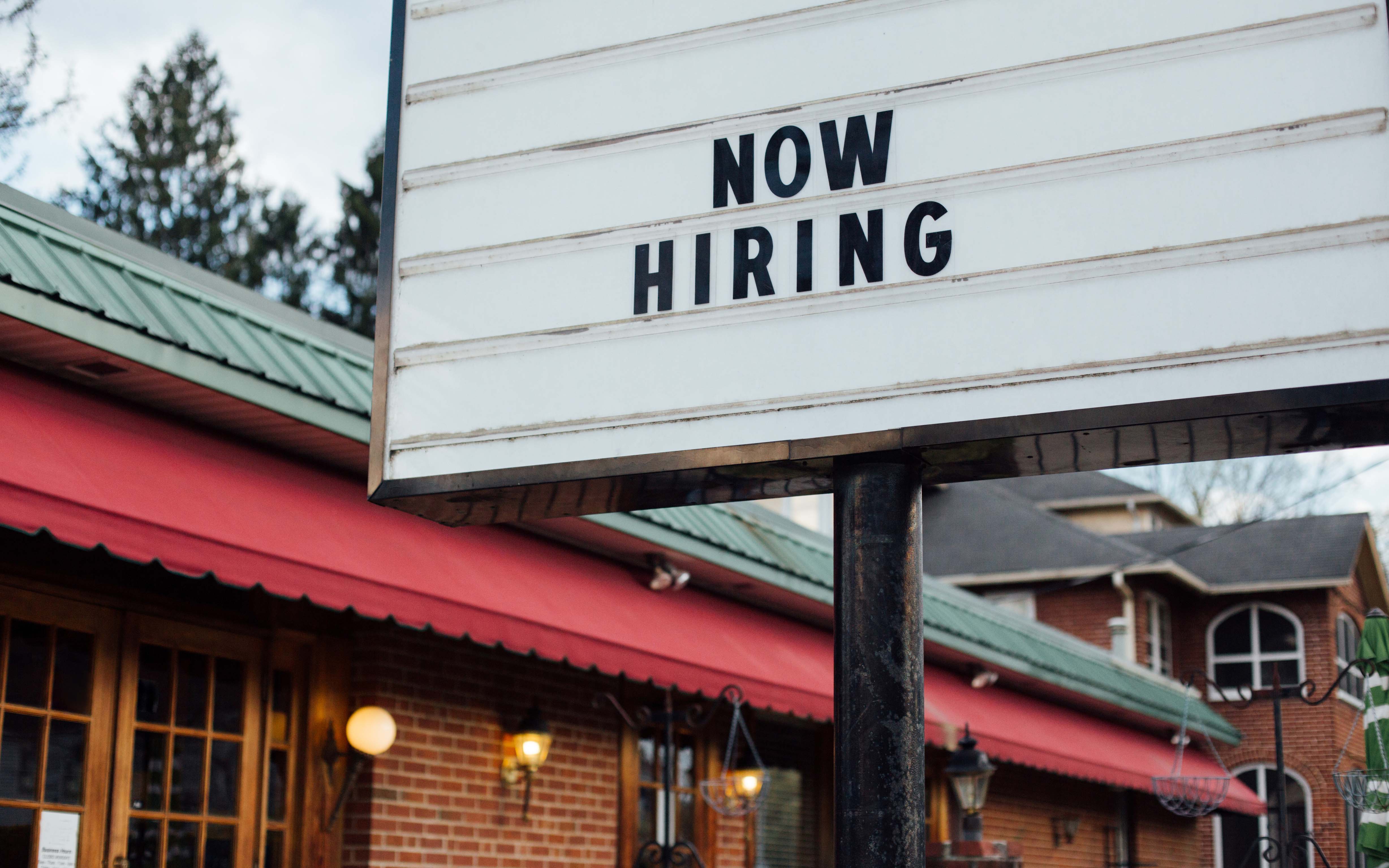Arkansas job market slowly heals from pandemic, stalls in September after summer rebound
October 26 - November 1, 2020
By Daily Record Staff
Arkansas’ civilian labor force hit a wall in September as the summer recovery from the ongoing health pandemic stalled heading into the fourth quarter of 2020.
Labor force data, produced by the U.S. Department of Labor’s Bureau of Labor Statistics, released on Oct. 20 by the state Division of Workforce Services (DWS), shows Arkansas’ seasonally adjusted unemployment rate declined one-tenth of a percentage point from 7.4% in August to 7.3% in September.
Arkansas’ 1,335,469-person civilian labor pool, or people eligible to work, decreased by 7,717 between months, a result of 5,391 fewer employed and 2,326 fewer unemployed Arkansans. Nationally, the U.S. jobless rate fell jobless rate dropped five-tenths of a percentage to 7.9% in September.
Susan Price, BLS programs operation manager at DWS, noted employment and unemployment both declined slightly, noted the decline in the number of employed workers and those Arkansans on the unemployment refers line actively searching for employment but unable to find work.
“Employment and unemployment both declined slightly, as Arkansans continue to move in and out,” Price said state’s jobless rate that is 2.8 percentage points above the near all-time low of 3.5% in September 2019.
In his monthly assessment of state’s recovering job market, University of Arkansas at Little Rock economist Michael Pakko pointed out the volatile unemployment rolls amid the ongoing COVID-19 pandemic, which pushed the state’s jobless rate to a peak of 10.8% in April.
“After recovering through the months of May, June and July, continued improvement Arkansas labor markets has slowed,” said Pakko, director of UALR’s Economic Development Institute. “The unemployment rate ticked slightly lower in September, declining 0.1 percentage point to 7.3%. However, there has been no statistically significant change in Arkansas’ unemployment rate since July.”
Pakko’s analysis also highlighted the number of unemployed that has hovered just below 100,000 for past three months, only falling slightly from 99,517 in August to 97,191 in September. The number of employed also declined in September by nearly 5,400, but not nearly enough to offset the revised gain from the previous month of a whopping 31,032.
“Similarly, the labor force contracted slightly in September after surging upward in August. The labor force data have been particularly volatile, suggesting large movements in and out of the labor force,” said Pakko. “Moreover, problems defining labor force status in the presence of temporary furloughs and layoffs has complicated the interpretation of the labor force participation data.”
Through September, nonfarm payroll jobs in Arkansas increased 13,200 in September to total 1,232,400. Five major industry sectors added jobs, related in large part to seasonal hiring. Jobs in government rose 8,700, mostly attributable to local and secondary teachers, administrators and other personnel returning to public school after the summer break.
Expansions were also posted in both health care and social assistance, while the ailing manufacturing sector rose by 1,200. That sector, which has declined by 14.8% between February and September, saw significant job adds of 1,400 in durable goods with reported hiring in fabricated metal product transportation equipment manufacturing, said DWS officials.
Nonfarm jobs down across board amid pandemic
Compared to a year ago, however, Arkansas’ nonfarm payroll employment has declined 46,800. Nine major industry sectors posted job losses. The largest decrease was in Arkansas’ tourism sector where the leisure and hospitality and hospitality and food services have lost 17,100 and 13,100, respectively, over the last year.
In the blue-collar focused manufacturing sector that has sent 16,000 workers to the unemployment line amid the pandemic, most of the contractions were in durable goods manufacturing sector that produces long-lasting hard goods such as cars, TVs, and household appliances. Hiring in government is also down by 7,000 as remote working, social distancing and stay-at-home policies have left hundreds of teachers and other school personnel on the sidelines.
Employment in educational and health services decreased 6,800, all in health care and social assistance. Notable declines were also reported in other services at 3,400 and financial activities, which cut 1,600 jobs over the past year. and financial activities (-1,600).
Arkansas’ trade, transportation, and utilities industry, which is also the state’s largest industrial sector, posted the largest annual increase, adding 6,400 jobs. Expansions were reported in all as efforts to address logistics and supply-chain problems during the economic shut-down has generated job growth during the period of recovery, noted Pakko.
Jobs in construction also rose 1,100 amid the state’s hot real estate and housing boom as most of the hiring occurred in specialty trade contractors that includes activities such as roofing, electrical, and flooring contractors.
Nationally, total nonfarm payroll employment rose by 661,000 in September as the jobless rate fell to 7.9%. U.S. Labor Department officials said the monthly improvements in the labor market reflect the continued resumption of economic activity that had been curtailed due to the coronavirus (COVID-19) pandemic and efforts to contain it.
“More than half the jobs lost from the pandemic have now been restored, and the third quarter ended with a 7.9% unemployment rate, half the15.8% third quarter unemployment rate projected by the Congressional Budget Office in May,” said U.S. Labor Department Secretary Eugene.
In September, notable job gains occurred in leisure and hospitality, in retail trade, in health care and social assistance, and in professional and business services. Employment in government declined over the month, mainly in state and local government education. The highly watched ADP National Employment, which closely mirrors BLS data, shows that private sector employment increased by 749,000 jobs from August to September.
“The labor market continues to recover gradually,” said Ahu Yildirmaz, vice president and co-head of the ADP Research Institute. “In September, the majority of sectors and company sizes experienced gains with trade, transportation and utilities; and manufacturing leading the way. However, small businesses continued to demonstrate slower growth.”
U.S. jobless rate mirrors Arkansas recovery
As noted by U.S Labor Department officials, the nation’s jobless rate fell 0.5 percentage points and the number of unemployed persons fell by 1.0 million to 12.6 million in September. Those measures declined for the fifth consecutive month but are higher than in February by 4.4 percentage points and 6.8 million, respectively.
Among the major worker groups, the unemployment rates declined in September for adult men (7.4%), adult women (7.7%), Whites (7.0 percent), and Asians (8.9%). The jobless rates for teenagers (15.9%), Blacks (12.1%), and Hispanics (10.3%) were mostly unchanged between months.
Among the unemployed, the number of persons on temporary layoff decreased by 1.5 million in September to 4.6 million. This measure is down considerably from the high of 18.1 million in April but is 3.8 million higher than in February. In September, the number of permanent job losers increased by 345,000 to 3.8 million, up by 2.5 million since February. The number of unemployed job leavers who quit or voluntarily left their previous job and immediately began looking for new employment rose by 212,000 to 801,000 in September.
The labor force participation rate decreased by 0.3 percentage point to 61.4% in September and is 2.0 percentage points lower than in February. The employment-population ratio, at 56.6 percent, changed little over the month but is 4.5 percentage points lower than in February. Pakko noted that the trends in nonfarm payroll employment for Arkansas and the U.S. remain favorable, despite the one-month decline in the Arkansas data for September.
“The pace of employment growth nationwide has slowed in recent months, as has growth in Arkansas,” said Pakko. “There is more month-to-month variability in state-level employment growth, so it is important to bear in mind that one month of data rarely indicates a change in trend; September’s modest down-tick doesn’t necessarily indicate a stalling of job growth, but rather a slowing of the pace of economic recovery.”
Meanwhile, new BLS data implemented by U.S. Labor Department officials since the pandemic shows to highlight changes in the nation’s labor pool shows that 22.7% of employed persons teleworked because of COVID-19, down from 24.3 percent in August. These data refer to employed persons who teleworked or worked at home for pay at some point in the last 4 weeks specifically because of the pandemic.
In September, 19.4 million persons reported that they had been unable to work because their employer closed or lost business due to the pandemic over the past four weeks. This measure is down from 24.2 million in August. Among those who reported in September that they were unable to work because of COVID-19 closures or lost business, 10.3%t received at least some pay from their employer for the hours not worked.
About 4.5 million persons not in the labor force in September were prevented from looking for work due to the pandemic. This is down from 5.2 million in August. However, the number of Americans filing for unemployment compensation rose to their highest level in nearly two months last week to 898,000, an increase of 53,000 from the previous week’s revised level.
The previous week’s level was revised up by 5,000 from 840,000 to 845,000. The 4-week moving average was 866,250, an increase of 8,000 from the previous week’s revised average. The previous week’s average was revised up by 1,250 from 857,000 to 858,250. Overall, the nation’s 147.6 million worker civilian labor pool still needs to hire 10.7 million workers to recovery 22 million jobs that were lost when the pandemic struck in March.
In Arkansas, Labor Department data downs that 5,065 out of work or underemployed Arkansans filed for unemployment benefits for the week ending Oct. 10, down 410 from the previous week. Those claims for pandemic assistance declined by 28 to 3,574 for the week, pushing total filings to just short of 64,000 at the end of September.
U.S. House Speaker Nancy Pelosi and Treasury Secretary Steven Mnuchin are now in talks on a new $2 trillion COVID-19 emergency relief package that would extend the $600 per week unemployment compensation that expired in early August. President Donald Trump has requested Mnuchin to close a deal ahead of the Nov. 3 president election, but U.S. Senate Republicans have requested a much smaller deal that extends Payroll Protection Program loans to small businesses but rejects further unemployment benefits for out-of-work Americans.
PHOTO CAPTIONS: (Photos provided)
Arkansas’ civilian labor pool hit a ‘September snap’ as the job market seeks to re-engage thousands of workers sent to the sidelines during the ongoing pandemic.
The U.S. jobless rate fell by 0.5%, and the number of unemployed persons fell by 1.0 million to 12.6 million in the month of September.




